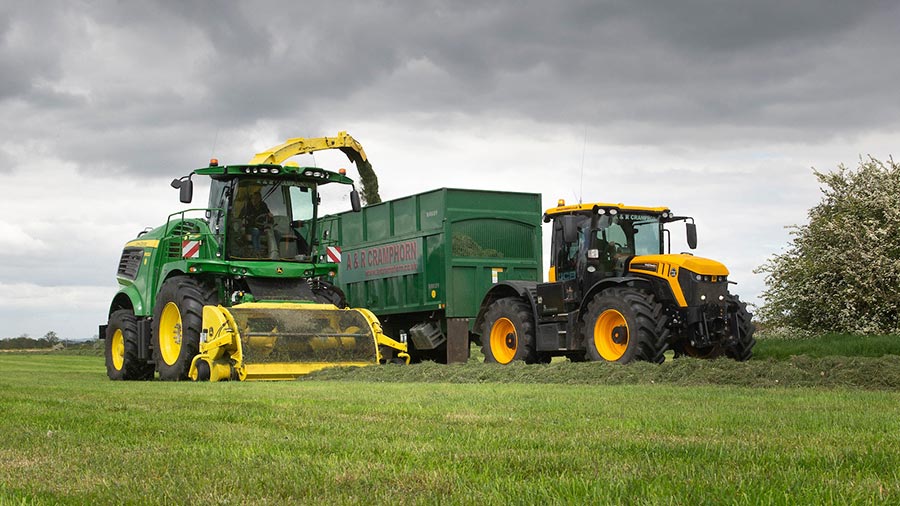Farmers advised to cut silage early despite wet weather
 © Tim Scrivener
© Tim Scrivener Anyone thinking of making silage in the next two weeks is advised to go ahead.
Despite forecasts of wet weather, lower-yielding, leafier crops of grass should wilt rapidly and a delaying cutting will only miss out on quality.
This is according to silage specialist Dave Davies of Silage Solutions, who says that energy, digestibility and protein content will all rapidly decline as the crop matures.
“It’s better to start early even if the weather isn’t great and it’s difficult to achieve a good wilt. Waiting two weeks would lose quality,” he says.
Cutting now will also set up subsequent cuts to succeed with positive regrowth and quality maintained for the rest of the season, he explains.
See also: How multi-cut can deliver profits of £333/ha over three-cut silage systems
Steps to achieve good fermentation
However, Dr Davies stresses that extra precautions are necessary to avoid a poor fermentation.
Dry matter content and sugar levels may be less than ideal, and there is potential for soil contamination in wet conditions increasing the chance of clostridia and enterobacteria being present in the clamp.
Early cut grass may also have higher nitrate levels, increasing its buffering capacity.
“This is a situation in which I’d strongly recommend using a salts-based chemical preservative.
“When dry matter is low and you don’t have the sugar to drive a desirable fermentation, the chemical will directly inhibit the clostridia and enterobacteria.”
In achieving a rapid decline in pH, the correct silage additive will also counter the effects of high nitrates, which work against good fermentation and have the potential to be converted into harmful nitrogen dioxide.
This is a brown gas which can occasionally be seen as a clamp is being filled, or shortly after sheeting.
“The problem with this gas is that it’s converted to nitric acid when it comes into contact with water, which can cause serious, permanent damage when breathed into the lungs,” he says.
Another practice to help mitigate against the harmful effects of wet weather is raising the mower’s cutting height to leave a 10cm residual:
“Rakes and tedders can also be set higher, which will help avoid further contamination and improve wilting,” he adds.
Tips on making silage in wet conditions
- Cut now for quality
- To avoid soil contamination, raise stubble height to 10cm
- Use an additive geared to low-dry-matter forage with sodium nitrite to eliminate undesirable bacteria, says forage specialist Kelvin Cave. Ingredients such as sodium benzoate and potassium sorbate prevent the activity of contaminants such as yeasts and moulds without compromising silage fermentation.
- Good compaction in light layers
- Use oxygen-barrier sheeting
